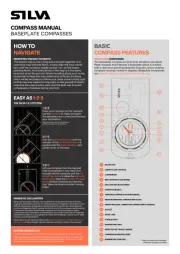Silva Compass Manual
Silva
Ikke kategoriseret
Compass
| Mærke: | Silva |
| Kategori: | Ikke kategoriseret |
| Model: | Compass |
Har du brug for hjælp?
Hvis du har brug for hjælp til Silva Compass stil et spørgsmål nedenfor, og andre brugere vil svare dig
Ikke kategoriseret Silva Manualer

30 August 2024

14 August 2024

11 August 2024
Ikke kategoriseret Manualer
- TEF
- Galaxy
- Walrus Audio
- AVMATRIX
- Rotatrim
- Redsbaby
- Wood's
- NVT
- Westinghouse
- Savio
- Stannah
- Herkules
- Toolland
- Sabco
- Dusbad
Nyeste Ikke kategoriseret Manualer

7 December 2025

7 December 2025

7 December 2025

7 December 2025

7 December 2025

7 December 2025

7 December 2025

7 December 2025

7 December 2025

7 December 2025
